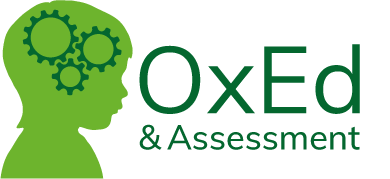Although some believe its importance has waned with the advent of artificial intelligence-based spell check features in word processing, email and other computer applications, spelling instruction is critical in helping students, particularly those with learning disabilities, succeed in reading and writing.
However, few commercially available materials exist for schools and districts to incorporate, according to a meta-analysis that synthesized nearly a half-century of research on the topic.
That study, published in the Journal of Learning Disabilities, found that students not only improved their spelling ability but also their reading and writing skills, particularly when they received phonics-based instruction and multi-linguistic methods like integrating sounds, spelling patterns and word parts.
The study’s lead author, Brennan Chandler, an assistant professor of dyslexia at Georgia State University, examined 59 research trials incorporating more than 2,200 students grades K-9 for evidence regarding how spelling-focused interventions impact those who had or were at risk for learning disabilities like dyslexia.
A former special education elementary school teacher who taught 2nd and 3rd grade at a school for twice-exceptional students, Chandler recalled how all of his former students struggled to learn how to write. His desire to help these students prompted him to pursue his PhD and focus on writing instruction.
“Spelling is a foundational skill within writing,” he said. “If students are unable to spell words, they’re unable to access those higher-order skills.”
The meta-analysis found that providing students with practice in phonemically connecting sounds not only helps them spell but also read and write better — especially among students with dyslexia, Chandler said. “It helps them crack the code that is the English language, both the code we see, and also connecting that to our written language.”
When students learn to spell by memorizing specific words, that only helps them spell those words, said Chandler, adding that memorizing sounds is the key ingredient.
“Phonemics-based spelling has the most transferrable lift,” he said. “We want teachers to think about how to embed different approaches.”
Although the science of reading approach being adopted in many districts and states helps students with literacy skills, “spelling and writing is sometimes a sideline endeavor,” Chandler said. “Reading and spelling are two sides of the same coin. We need to think about how we can embed more writing instruction, and specifically spelling instruction, into our daily practice.”
The review also found that few classroom-ready programs exist to strategically integrate these approaches.
“Districts need professional standards,” he said. “It’s hard to recommend to schools exactly what to use. I’ve been telling teachers and district leaders that we do have the science, but schools need the tools and the programs.”
The next project for Chandler and his research team will be to develop research-based spelling intervention exercises that can be incorporated into existing reading approaches and boost support for both reading and writing outcomes — especially for students with dyslexia.
“Spelling usually lags behind reading skills because it is so cognitively demanding,” he said. “Some students need that extra boost. We’re working on an intervention to help schools and districts make sure they can support those outcomes.”













